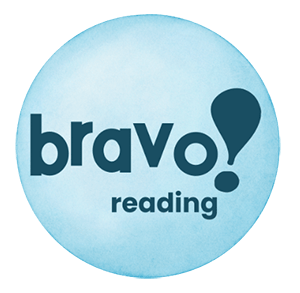Now Your Child Can Letter Sounds!
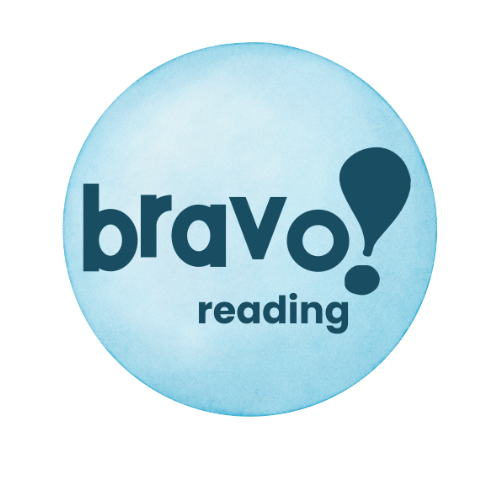
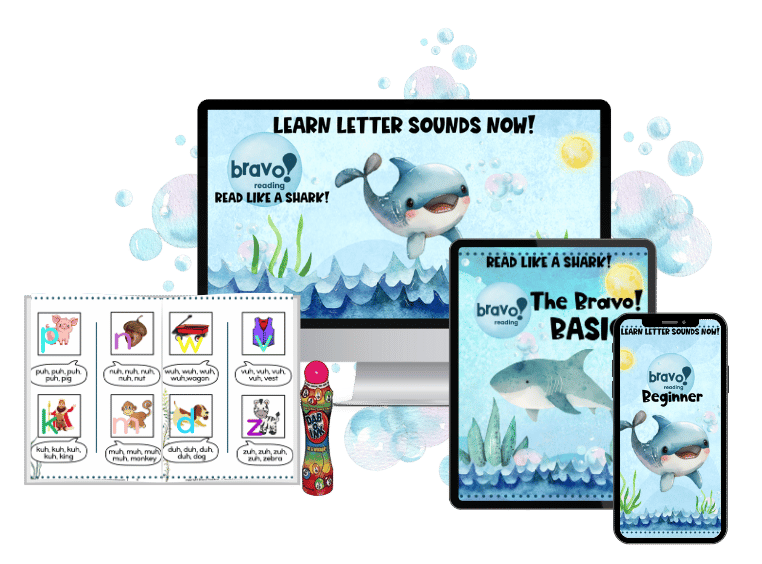
One of the biggest mistakes you might be making is assuming your child knows all letter sounds. After all, your child had to learn letter sounds in kindergarten.
Yup.
That’s true.
But your child might have learned letter sounds back then…
And forgotten some of them.
That’s a classic “dyslexia” move.
You see, kids with dyslexia know information one minute. The next minute or two, it’s like new information.
This can drive you straight up a wall! Your child is bright; you know this. After all, entire plots of movies can be recited, not to mention every fact about sharks out there.
But the vowel sound “e” can be like one of the dark mysteries of earth!
It seems so easy, the process of learning letter sounds. Twenty-six simple letters that must be learned. Not even their names. Just their sounds. Plus the long and short sounds of five vowels.
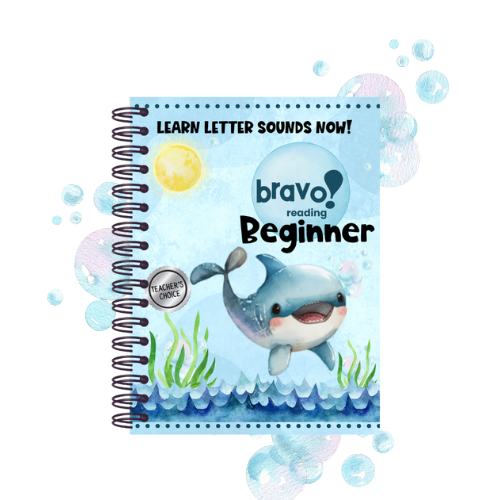
For some kids, though, this process isn’t easy. It’s torture. They might as well be asked to fly to the moon and back.
Here’s the dirty truth, though. Before your child can read with confidence and accuracy, the twenty-six alphabet letters must be known inside out – upside down – and in between.
But that’s not all. Those pesky vowels enter the scene – each of the five with two distinctly different sounds. One long. One short.
Hmmm. Now it’s starting to sound a bit more difficult.

Why Traditional Reading Programs Miss The Mark Every Time
Most kids learn the sounds of the alphabet – including those tricky vowel sounds – without a hitch. But if your child has dyslexia, those twenty-six letters might as well be written in another language! That’s because children with dyslexia learn differently than other kids.

And unfortunately, even though twenty percent of school children have dyslexia, reading programs cater to mainstream children, not to those who learn a bit differently.
Did you know that a symptom of dyslexia is to have average or above average intelligence? That’s why teachers, parents, and family members get so frustrated. They know their dyslexic children are verbal, smart, and brilliant.
Yet…twenty-six letter sounds can send them over the edge.
Learn Letter Sounds: It’s All In The Action!
Most kids with dyslexia are hands-on or tactile learners. This means they need to “do” to learn. They don’t learn by seeing or hearing.
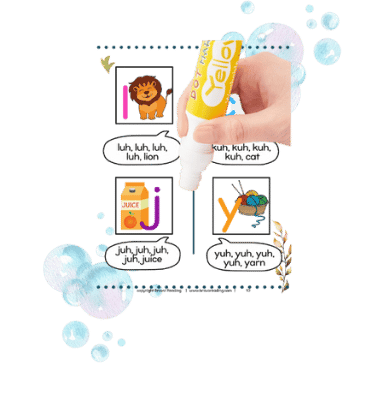
The problem arises for these kids when they are force fed large doses of traditional reading programs that rely heavily on visual and auditory means to teach letter sounds.
Phonics worksheets. Flashcards. Matching pictures to sounds.
These mundane, traditional ways of teaching letter sounds to children don’t work for kids with dyslexia! Children with dyslexia need to move to learn!
Set It In Right: Large Motor Movements To Learn Letter Sounds
And not just any movement will do. They need large motor movement where their entire arms and shoulders are involved in the process. They need to cross the invisible vertical midline of the body.

Cross. Dab. Cross. Dab. Over and over, the movements that make sense for them make learning letter sounds easy.
That’s the language they speak.
It’s physical…bold. And even better…it’s busy!
Flashcards won’t work for kids with dyslexia. That’s because there’s no movement involved. There is little or no color used in traditional flashcards. In addition, pictures, visual and auditory cues, or a multisensory approach are all missing. This frustrates a child with dyslexia!
Phonics worksheets don’t work for your dyslexic child, either. The process of matching sounds to pictures without movement is foreign to them, because they have compromised visual and auditory learning systems.
The dyslexic child relies heavily on movement for learning to make sense…not staring glumly at a meaningless flashcard with a letter written on it. No matter how cute or colorful that letter might be…the language of learning is wrong for the child with dyslexia.
It’s All In The Senses For Kids With Dyslexia
Children with dyslexia have compromised or weakened visual and auditory processing systems. That’s why they rely so heavily on movement to learn. Movement is their main learning sense, so why not speak to them in the learning language they intrinsically understand?
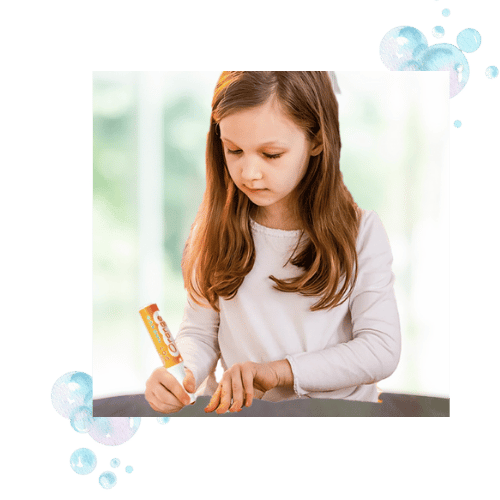
It’s really not that hard.
At Bravo! Reading, we know your dyslexic learner. We know your child must move to set in letter sounds. Bravo! also knows that movement is a fun process for your child!
When learning is fun, then your child will stick with it.
Happily.
Eagerly.
Why Multisensory Is The Best Way To Learn Letter Sounds
In addition, Kids with dyslexia need a multisensory approach to learning letter sounds because their sensory routes aren’t strong – those visual and auditory routes of learning.
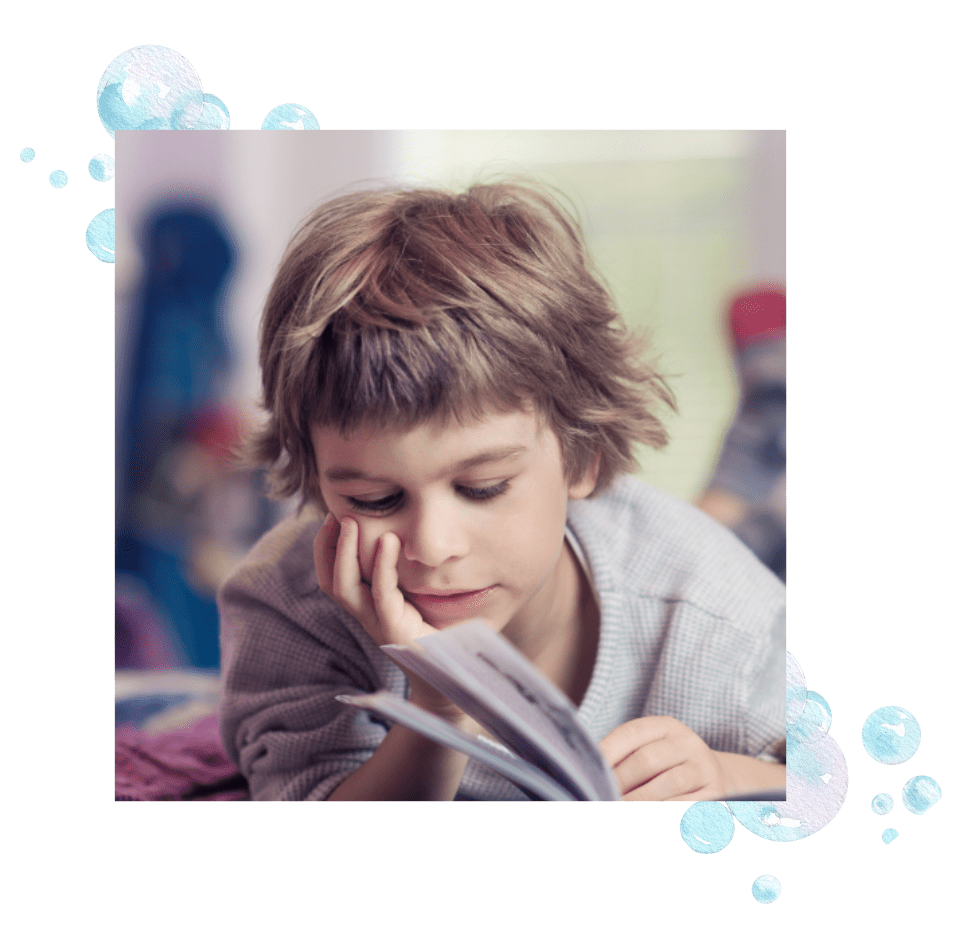
Remember…movement is their jam!
Traditional reading and phonics programs rely heavily on visual and auditory modes of learning to teach the child to learn letter sounds. They show flashcards with the letter while the child practices the sound. The child is expected to match pictures with sounds.
This doesn’t “stick” with the dyslexic learner because these are visual and auditory routes of learning. It’s like wind blows through their ears when these methods are used. You get frustrated. Your child’s teacher gets frustrated. But even worse, your child gets frustrated.
If something isn’t done, self-esteem suffers. Grades drop because reading is difficult. Homework becomes a nightmare.
The Right-Brain Dominant Learner: Please No Penalties!
Most kids with dyslexia are also right-brain dominant learners. This means they are more in touch with their creative side. Movement, rhythm, music, and art are all right-brain dominant activities.
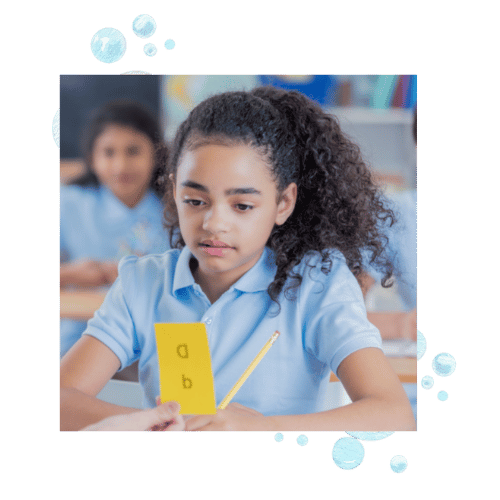
Do you know what activity isn’t?
Phonics.
Phonics is a left-brain dominant activity.
So just by the nature, just by the definition, can you see how traditional reading programs that rely heavily on phonics simply won’t work for the right-brain dominant child?
Phonics worksheets and flashcards seem like a natural way to learn – if you don’t have dyslexia or if you aren’t right-brain dominant. It’s a logical system of learning, after all, and it’s worked for years.
Or so most people think.
Even though twenty percent of school-aged children are dyslexic.
Even though these methods are failing one fifth of their entire population, these traditional reading programs stay in the forefront of teaching children how to learn letter sounds in most schools.
New Techniques Show Your Child Exactly How To Learn Letter Sounds
If your child has dyslexia or is struggling to learn letter sounds, then phonics and flashcards, endless workbooks of these activities simply won’t work for your child.

You child needs to try something new. Something different than phonics sheets and flashcards.
Something that works for the way your child learns. A program that’s tried and true…one that teaches letter sounds with large muscle movements.
Not matching letters to sounds.
And…definitely not with meaningless flashcards.
Learn Letter Sounds Like Magic With Innovative Brain-Based Learning
Brain-based learning helps kids with dyslexia by using methods that work best for how their brains learn. For example, kids with dyslexia often learn better when they can see and touch things. This makes learning fun and helps kids remember what they learn.
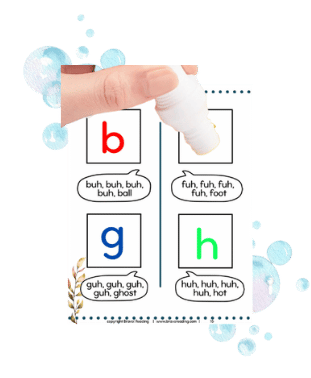
Kids with dyslexia are smart and learn quickly when the right modes of teaching are used. Even better, they hang on to what they’ve learned if it’s taught in a way they can understand.
If information isn’t presented in this way, then it flies through the window. In one ear and out the other.
If you’ve ever taught your child how to do something and the next day it seems like new information, that’s because it wasn’t shown in a way your child can understand.
The “learning language” is all wrong for your child.
Why Tradition Brings The Wrong Results
This is exactly why typical programs geared for kids with dyslexia only get so far. Moving a tile or letter with the fingers from one place to another can be helpful, but for kids with dyslexia, large motor movements work better.

In addition, memorizing spelling and reading rules won’t work for kids with dyslexia, because they usually have weak visual and auditory memory skills. This is like asking them to play basketball without a hoop!
Large motor movement is their “learning language”!
And since kids with dyslexia learn differently than others, they need brain-based learning to help set in letter sounds. This is the icing on the cake for them, the way to connect movement with learning.
Neuroplasticity: It’s More Than A Big Word!
Bravo! Reading has your child use dot dabbers or bingo markers to cross the vertical midline of the body over and over again while pounding colorful letters.
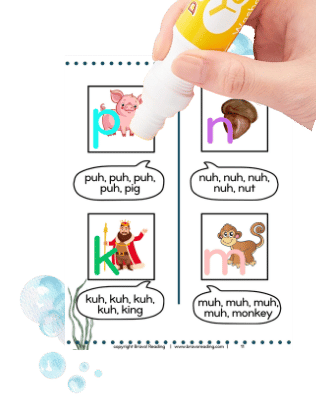
When your child says the sounds of the letters out loud while pounding a dot dabber across the page, true learning sets in.
New wiring is formed in the brain.
This is called neuro-plasticity.
Neuro-plasticity is simply the ability of the brain to form and reorganize connections, especially in response to learning. Even better, brain-based learning lasts.
You won’t have to look at your child’s blank face when you’ve already gone over the sound of a letter three times. Because it’s already set in. It’s truly learned.
Large cross lateral motions, predictability, brain-based learning, and a multi-sensory approach to teaching letter sounds is the best way to teach your child how to learn and retain letter sounds.
And letter sounds are the first building block to a strong reading foundation.
Learn Letter Sounds: The Best Approach Ever!
The Bravo! Beginner uses brain-based learning along with multi-sensory movements to help your child learn letter sounds quickly and easily. Even better, your child will enjoy learning letter sounds while using the Bravo! Beginner…because it’s fun!

Often, kids will use the Bravo! Beginner and argue that they aren’t even reading!
It seems impossible to them that they are using dot dabbers, hitting colorful pictures with them, crossing over a line on the page, and saying word “clouds” out loud for it to be considered reading.
If you’ve tried everything but your child hasn’t learned letter sounds, then check out the Bravo! Beginner! For kids with dyslexia, it’s the best way to learn!
Failure And Pain: The Chain That Never Ends

By the time you’re reading this, your child might already be turned off to reading.
It happens so easily.

When flashcards don’t work, your child internalizes the pain of failure. Even worse, when your child is forced to use phonics sheets, huge misunderstandings take place.
Anger arises, and your child’s self-esteem takes a hit. When a teacher asks your child for the name of a letter sound in front of the class and your child doesn’t answer correctly, shame enters the playing field.
It shouldn’t be this way!
Reading should be taught in a fun, relaxed way. In a way your child understands and can apply. Especially letter sounds, which are the entry level to all reading skills.
Big Reward After A Small Investment!
Most kids will naturally pick up on letter sounds. It’s a process they learn from being read to. Or, they might pick it up on the internet, television, or the media. Some kids will naturally learn from games, especially board games. And yes, most kids will naturally learn letter sounds from traditional reading programs.

Additionally, if your child hasn’t learned letter sounds yet, you might have bought some workbooks or games that promised to help.
Most likely, they didn’t.
That’s because these materials didn’t take your child’s unique learning style into consideration. They didn’t understand how kids with dyslexia process information.
At Bravo!, we specialize in how the dyslexic child reads and processes information so we can bring these tools straight to you.
When your child learns letter sounds the Bravo! Way, letter sounds are learned with ease and reading skills are mastered. Tests are passed with confidence, and grades soar.
Loving to Learn: The Bravo! Beginner Makes It Happen
Kids love learning letter sounds with the Bravo! Beginner. That’s because it speaks in their learning language – not someone else’s. Most kids who struggle to learn letter sounds have dyslexia, and that means they learn differently than other kids.
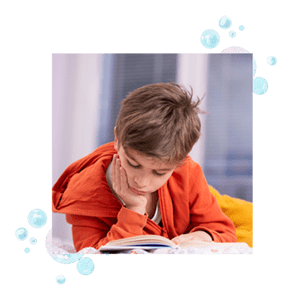
Traditional reading programs cater to kids without dyslexia. They use methods that don’t work for kids who struggle to learn to read and spell. This isn’t what your child needs!
Since most kids with dyslexia are weak in visual and auditory skills, they learn best with large motor movements. Add in brain-based learning where they cross the midline of the body, and suddenly, they’re smiling!
When kids are having fun, they stay on task longer. Staying on task equates to learning, so having fun is important if letter sounds are to be learned.

When The Right Methods Are Used, Miracles Happen
When the right methods are used, your child can make excellent progress in learning all letter sounds – even those tricky vowels! In addition, Bravo! Reading teaches kids how to learn letter sounds in a way that makes sense to them – not to someone else.

Kids with dyslexia who have failed to learn letter sounds with all other methods make huge progress with the Bravo! Beginner. With as little as ten minutes of practice, five days a week, your child can learn letter sounds with ease…without teacher’s manuals piled up on the kitchen table.
You won’t have flashcards stacked up, collecting dust and causing stress. Your child won’t have to engage in “drill and kill” worksheets that will never connect.
Instead, your child will learn letter sounds in a way that makes sense. And even better, it’s fun!
Large motor cross lateral movements are what make the difference for your dyslexic learner!
A Sample Page from the Bravo! Beginner

Your Child CAN Learn Letter Sounds!
If your child has dyslexia or is struggling to learn letter sounds, the Bravo! Beginner is the answer. It works faster than any other method available. Kids who have struggled to learn and retain letter sounds master them quickly and easily – often in as little as three weeks!

By using predictability, brain-based learning, and large cross lateral motor movements, your child is finally able to master letter sounds with the Bravo! Beginner. Furthermore, even older kids who struggle to read benefit from going back and making sure consonant and vowel sounds are mastered.
A firm knowledge of letter sounds is the foundation for all reading skills!
Next, decoding enters the stage. In a nutshell, decoding is the ability to sound out letters and blend them into words. Strong decoding skills are vitally dependent on your child’s ability to know, use, and manipulate letter sounds.
Strong decoding skills are vitally important for reading fluency and comprehension scores. It is a means to an end, the true route for reading success. And the first step for decoding success is to make sure your child has a firm grasp on letter sounds.
Why Automatic Responses Make a Difference
Knowing letter sounds with automaticity is the first step of decoding. Automaticity means that your child can do something without using conscious thought.

It’s like driving a car.
When you first got your license, you had to put a lot of thought and effort into staying in the lines, braking, steering, and watching for oncoming traffic.
But at some point, you realized you ended up somewhere without knowing how you got there! That’s called automaticity.
Consequently, this skill of automatically doing something is very important for all reading skills, not just knowing letter sounds or decoding.
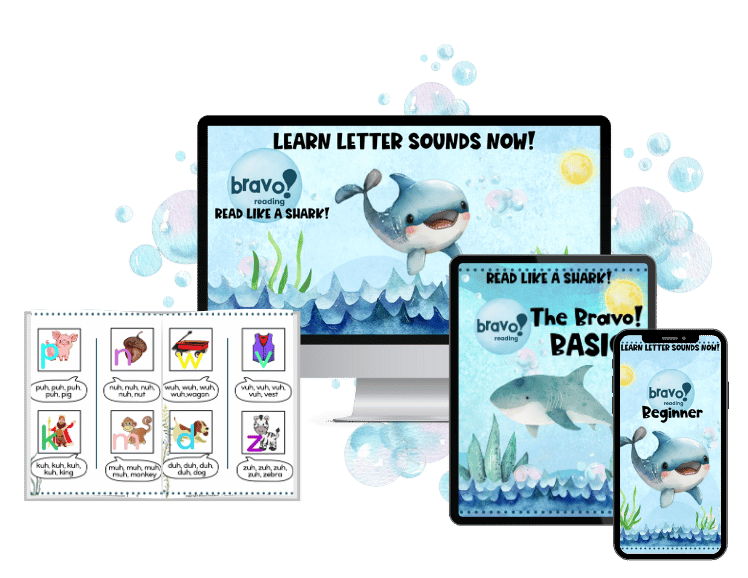

Know Letter Sounds Like The Back Of Your Hand!
Knowing letter sounds like the back of your hand is important. If your child has to stop and think about each letter sound, then there’s a pause in learning. The flow of learning stops and your child must redirect. Fluency is stalled. Comprehension takes a back seat.
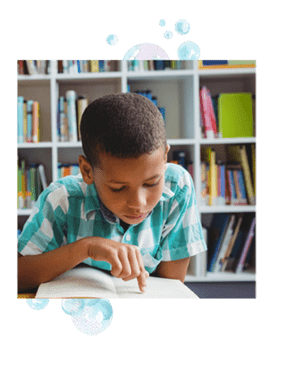
Fluency is your child’s ability to read with accuracy, speed, and proper expression. Your child needs to know letter sounds with automaticity for excellent fluency skills. In addition, when fluency is poor, your child will stammer and stutter over words. This not only leads to poor grades, but it can lead to embarrassment.
Excellent fluency scores lead to better comprehension skills. When fluency occurs with automaticity, then your child is able to focus on comprehension – on the meaning of text – instead of laboring over individual letters and trying to blend them into words.

The Ultimate Learning List that Lasts
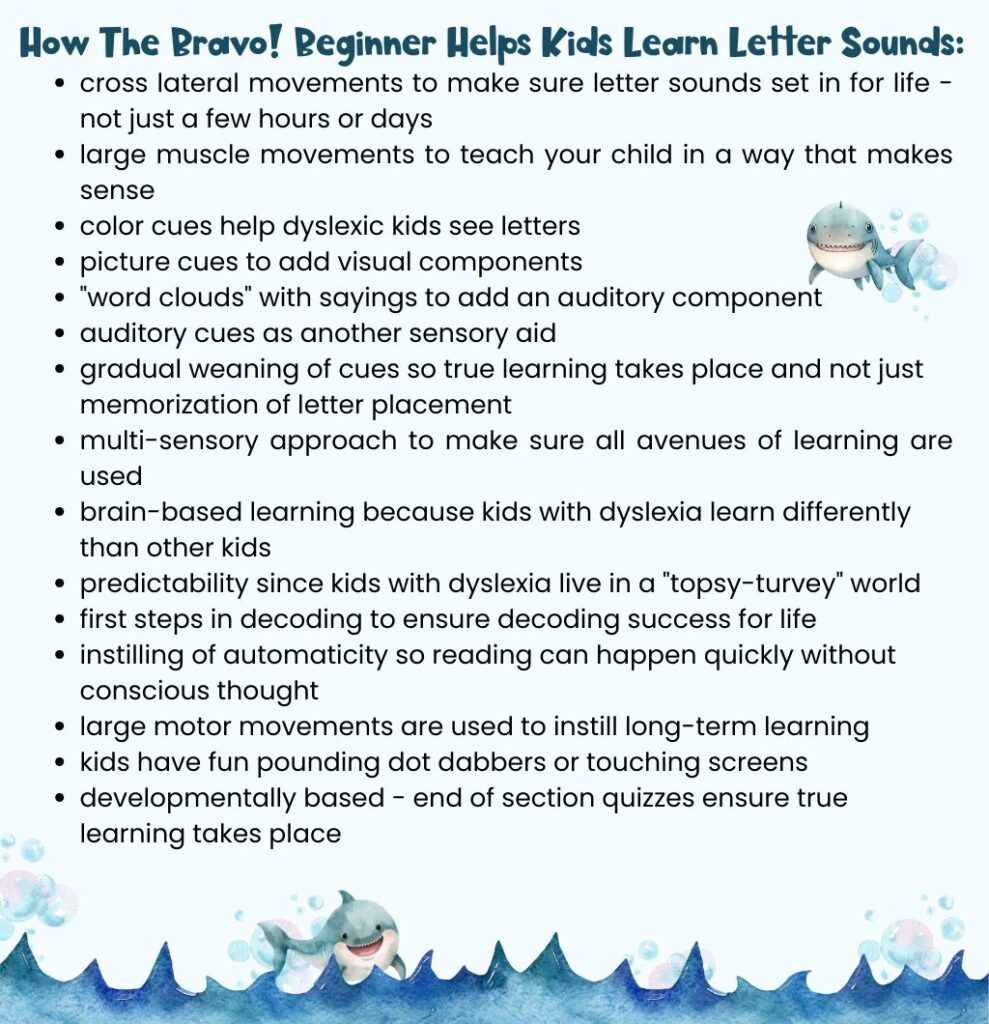


Get The Beginner And More In The Bravo! Bundle
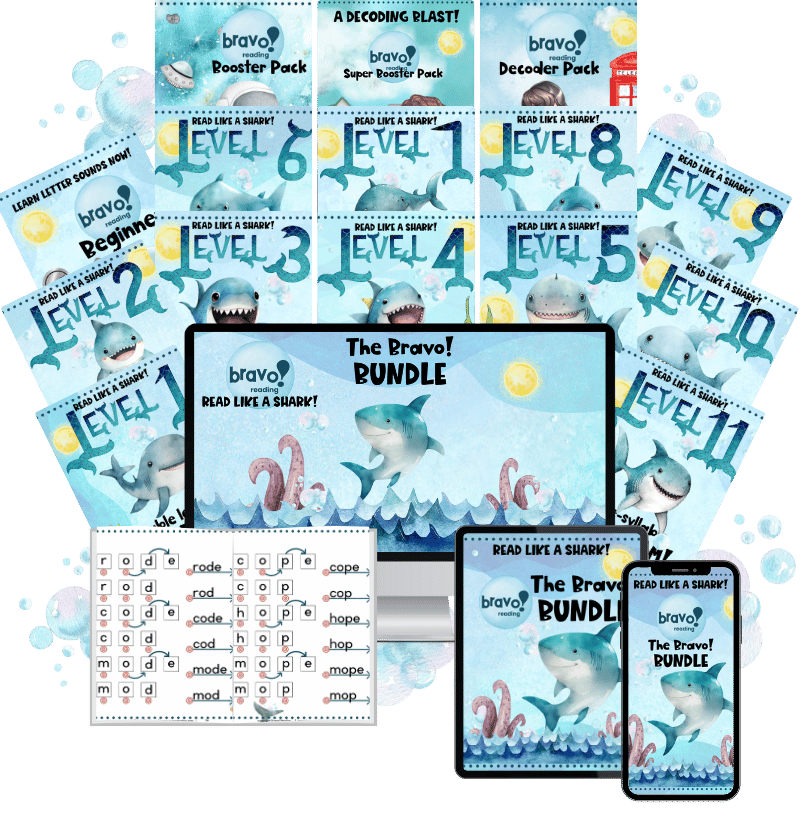
When you get The Bravo! Bundle you won’t just save money! You’ll help your child overcome reading issues and a lot more. You’ll get the Bravo! Beginner along with all eleven levels of the Bravo! Reading Program. You’ll also receive all of Bravo! Reading’s expansion packs.
The expansion packs you’ll receive are the Bravo! Booster Pack, the Bravo! Super Booster Pack, and the Bravo! Decoder Pack.


The Bravo! Money Back Guarantee
Bravo! Reading knows what it’s like to have a child with dyslexia. After all, Lisa Harp, the founder of Bravo! Reading originally developed this reading program to help her own son who had dyslexia. Within a year, he was an honor student!
Lisa brings this same methods to you so you can help your child. Whether you work with your child, hire a tutor to do so, or have a family member help out, we know the cost of not doing anything.When your child struggles to read, the world is bleak. When reading skills fall into place, a magical world opens up.
We also know the cost of panic decisions, and we know that Bravo! is a confidence decision.
Reading is a serious subject: Bravo! Makes It Fun!

Turning Tears To Sunshine The Bravo! Way
Bravo! Reading knows what it’s like to have tears instead of sunshine, fits instead of smiles. Books thrown aside and Kindles ignored. Bravo! knows what it’s like to have a child avoid reading at all costs, and we’ve gone the extra mile to fix that problem for you and your child.
Because of this, Bravo! offers a 100% money back guarantee.
If you aren’t happy with the Bravo! Reading Program, just let us know and we’ll happily refund your money, no questions asked.

